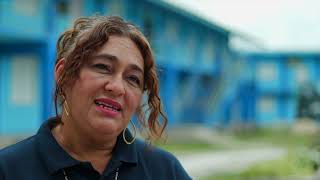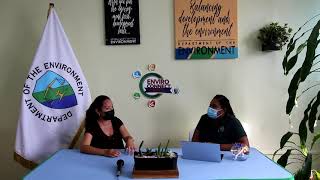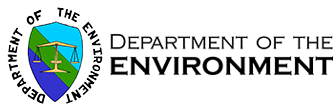7552 Hummingbird Highway,
Belmopan City, Belize, C.A.
Water in Belize
We can survive without food for weeks but would only last a few days without water. We need water for survival and all aspects of life, such as food, health, energy, and recreation. Today, the demand for water goes beyond our basic and personal needs. It is needed to meet many of our social, cultural, environmental and economic needs as well.
Water makes up 70% of our world but only 2.5% is freshwater. Freshwater is found on the surface e.g. rivers, streams, lagoons and lakes, but the majority of it is beneath the earth’s surface (underground) and in icecaps and glaciers. If we really look at it, less than 1% of the world’s water resources are readily available for food security, food production, health, life and development.
Although water is an extraordinary substance, we nearly always overlook the special relationship it has with our daily lives. We know that water is one of the most vital natural resources for all life on earth. However, did you know that water plays a huge role in our development, culture, environment and our economy? A community that has easy access to water is a community that most often sees faster development. Some of the important uses of water are in health, food production, aquaculture, transportation, fire control, recreation, research and education. We only highlighted some uses. Of course there are other uses, like the obvious use of water for hygiene purposes. Washing hands with soap and water has always been and continues to be an effective way to prevent the spread of diseases. Another is the use of water for religious purposes. Some religions use water as a scared part of their rituals and beliefs, such as baptism. If you take a closer look, you will find that the important uses of water are almost endless.
Water Pollution in Belize
DEFINITION: Water pollution is the addition of substances into our water bodies, changing the natural water quality.
LIQUID WASTE AND SEWAGE
With more than 90% of our population having greater access to freshwater, from wells, rivers, or groundwater, our consumption rate has grown. This is problematic because what we consume or use, eventually becomes wastewater. Let’s really ponder this for a moment. When we brush our teeth, take a bath or wash our clothes, what happens to the water? It becomes waste water. On average, a person with access to potable water generates approximately 25 gallons of waste water daily. With a population of over 312, 000 people, Belizeans generate well over 7.5 million gallons of wastewater daily. In one year the amount of wastewater generated in homes across Belize is approximately 3 billion gallons or 600 million buckets of wastewater. Remember, this amount comes only from homes and does not include our rapidly growing industries and businesses that are generating millions of gallons of wastewater daily.
SOURCES OF WATER POLLUTION IN BELIZE
• Municipal waste is the most common form of water pollution in Belize. Waste water from homes and businesses often enters rivers and streams.
• Industrial waste is inorganic and organic substances released from processing industries. It has been known to affect major watersheds in Belize.
• Agricultural waste is organic and inorganic pollutants from crop lands, livestock and poultry farming, soil erosions, pesticides and fertilizers.
• Other sources range from oil spills to heat pollutants.

1. Municipal Wastewater and Sewage: Municipal wastewater and sewage may carry micro-organisms that can cause infections and diseases but more often they contain chemicals such as nitrates, phosphates and other harmful chemicals that can enter, seep into and contaminate our surface and groundwater resources. These chemicals can be found in house cleaning agents and washing products that are mostly synthetic detergents and not biodegradable. When these chemicals seep into the ground or run-off into drains, streams and rivers, they can affect the quality of our freshwater resources, jeopardize the health of aquatic life, and destroy costal habitats and marine life.
Although septic tank facilities may seem to be a step in the right direction, studies reveal that there are many faulty septic tanks that are a direct threat to our surface and ground water resources. Because septic tanks are not part of a sewer treatment system, the waste water remains untreated. This can contaminate our precious groundwater and surface water resources. When this occurs, it threatens our health and environment. Sewage disposal in coastal areas is especially problematic. In Belize City and San Pedro Town, the sewer system serves only 35% of households. Since Belize City is below sea level and is primarily swamp, all forms of sewage disposal not connected to the sewer treatment system empty waste (faecal coliform) into our canals, rivers and groundwater bodies. In other coastal communities like Hopkins, Placencia and Punta Gorda Town, there are no sewer systems. The lack of proper facilities in these areas adds to the problem of water pollution along our coastlines and sea.
2. Industrial Waste: Large industries usually produce industrial waste water containing chemicals, such as toxic waste and organic pollutants. Small or light industries (vehicle mechanics, bakeries, car paint or car wash operators, boat-makers, hotels, restaurants etc.) also account for a major part of water pollution in towns and cities. While many major industries had once been a primary contributor of water pollution, many industries have acquired or are in the process of building treatment facilities for industrial waste water.

Municipal wastes are being dumped in drains that pour into streams and rivers.
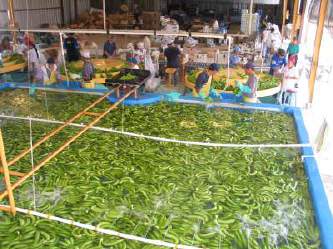
Industrial waste water accounts for almost 2/3 of the waste water produced nationally.
3. Aquaculture Industry: Aquaculture in Belize has suffered some major setbacks over the years but still manages to generate more than $60 million dollars annually. Just as it is a huge income earner for Belize, the aquaculture industry is also one of Belize’s biggest waste water producers. These farms extract millions of gallons of water daily from the sea, estuary, lagoons and rivers to use for aquaculture farming. However, only about 25% of waste water is treated. The high generation of waste water for this industry now requires larger and more improved water treatment ponds and facilities. Because of the high cost of operation, there has been a decline in aquaculture farms. The ones that are still in operation are adapting treatment systems that can accommodate the large amount of wastewater produced.
4. Agriculture Sources: Agricultural practices such as fertilizers, pesticides, mechanical or slash and burn methods, greatly contribute to the contamination of ground and surface water resources. Intense farming pressures on the land cause chemicals from fertilizers (e.g. nitrate) and pesticides to seep into the groundwater, a process commonly known as leaching. Agricultural run-off, or the water from the farm lands that drains into rivers, is a major source of water pollution.
5. Soil Erosion: Water pollution also occurs when silt and other solids, such as top soils from farmlands, construction and logging sites, urban areas, and eroded river banks, run-off into nearby water channels when it rains. Under natural conditions, lakes, rivers, and other water bodies, undergo an aging process that slowly carries sediment and organic matter into the water. However, with soil erosion, many of these sediments enter water bodies, impairing aquatic organisms’ respiration, altering plant productivity and reducing water depth.
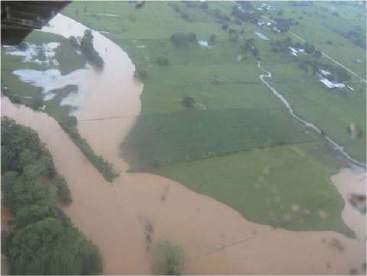
A stagnant and contaminated body of water often becomes ideal breeding ground for mosquitos.
OTHER SOURCES
Organic Waste: Too much organic material, such as dead leaves, plants, grass, and animal manures, also cause water pollution. The main organic materials found to pollute our waters are plant waste. When natural bacteria and protozoan in the water break down these organic materials they begin to use up the oxygen in the water. Some of these organic materials begin to rot rapidly. It may threaten the health and life of many aquatic species. When this occurs, our food and fishing is also affected by this form of contamination.
Oil and Heat: Oil and heat also pollute our waters. Oil often pollutes our water when vehicles are washed in our rivers and streams. With Belize’s new oil industry, care is also being taken to prevent oil spills which can pollute water and harm wildlife. You may wonder why heat is a pollutant. Heat is caused by increased temperatures and can result in the deaths of many aquatic organisms. For example, we know that our sensitive corals cannot survive if the water becomes warmer than normal. Freshwater resources also become affected when factories and power plants dump hot or warm waste water into our rivers and streams.

Many auto or mechanic shops are collecting waste oil to prevent land pollution. If not done, the oil can destroy the fertility of the soil completely.

Washing vehicles in rivers and streams is a form of water pollution. Apart from dust, oil from the vehicle wheels and the body of the vehicle among other things are washed into the river.
EFFECTS OF WATER POLLUTION
When water pollution occurs, it not only affects water quality but the people who rely on the water resource, our fragile biodiversity, including habitats, particularly endangering diverse aquatic life.
Polluted water is unsuitable for drinking, recreation, agriculture, and industry. Pathogens, which are organisms such as bacteria, viruses, and protozoan, thrive in polluted waters. These microscopic pollutants enter waterways through untreated sewage, storm drains, septic tanks, runoff from farms, and boats that dump sewage. They can cause many illnesses such as typhoid fever, cholera, mosquito-borne-diseases, dysentery, skin diseases, respiratory diseases and many other illnesses.
Water pollution destroys marine life and reduces their reproductive ability. Too much waste nutrients also stimulates the growth of aquatic plants and algae. When the aquatic plants and algae grow rapidly, they begin to clog our waterways. They take over the surface of the water and make free-flowing water become stagnant or still. This usually becomes an ideal breeding ground for mosquitoes. The growth of the algae and decomposed organisms can also use up dissolved oxygen, block light to deeper waters, and eventually suffocate marine organisms.
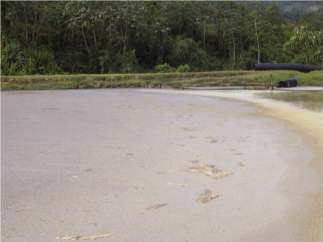
A stagnant and contaminated body of water often becomes ideal breeding ground for mosquitos.
PREVENTION
We can all help to protect our water. Here are some helpful tips.
1. Save Water : Conserving water decreases the amount of waste water we produce.
• Use water wisely.
• Turn off water while brushing your teeth and shaving, or lathering.
• Verify that your home is leak free. Save water and money by fixing leaky faucets. A dripping faucet can waste 20 gallons of water a day or more and increase your water bill by 10%.
• Avoid flushing toilets unnecessarily. Avoid using toilet as a waste basket. Each flush uses between 15-23 liters of water.
• Install low flow toilets. Toilets using only 2 gallons per flush can save 60% more water than a higher gallon per flush toilet. Leaky toilets can waste up to 500 gallons of water a day.
• Take shorter showers.
• Low flow shower heads reduce water use from 4 to 2.5 gal/min. Therefore, a shower head using only 2 1/2 gallons a minute can save as much as 15 gallons of water during a normal 10-minute shower .
• Check for tank leaks by pouring a small amount of food coloring in the tank. If coloring stains appear after 30 minutes, you will need to fix the leak. Flush as soon as the test is complete to avoid leaving stains in your tank.
• Use energy star rated washers that also have a water factor at or lower than 9.5 use 35-50 percent less water and 50 percent less energy per load.
• It’s usually not necessary to water grass every day. Instead, test your lawn by stepping on a patch of grass; if it springs back, it doesn’t need water.
• Avoid running water continuously when washing dishes. Fill sinks to wash dishes.
• Do not clean fruits and vegetables under running tap water or thaw frozen food under running water.
• Try to use faucet aerators. This provides good pressure while reducing water use. The standard faucet flow rate is 5 gallons a minute. A low flow aerator can reduce this flow to approximately 2 1/2 gallons a minute while still providing adequate water for washing and rinsing. Installing aerators on the kitchen sink and lavatory faucets can cut water use by as much as 60 gallons a month for a typical family of four.
2. Prevent water pollu8on: preven8ng water pollu8on from contamina8ng our surface and groundwater supply ensures both our environmental and public health.
• Do not wash vehicles or pour chemicals in our rivers or streams.
• Do not dispose of gasoline, oil or weed killers and other lawn and garden pesticides down the drain, into surface water, onto the ground, or in the trash.
• Never pour harmful household products down a sink, toilet or bathtub drain unless the label indicates it is safe to do so.
• Non-toxic cleaners can work effectively.
• Take used oil to recycling station-do not pour on ground or into storm drain!
• Swim, raft or canoe instead of using motorized choices on the water for recreation.
Video Gallery

